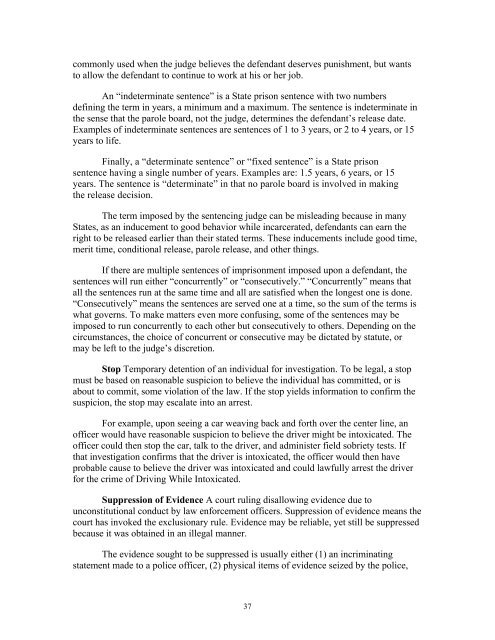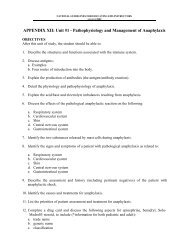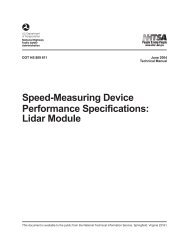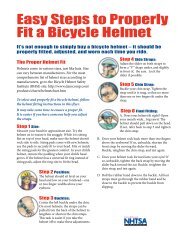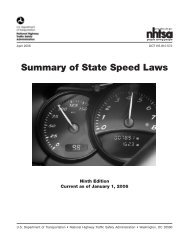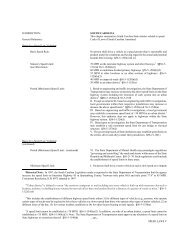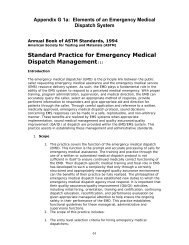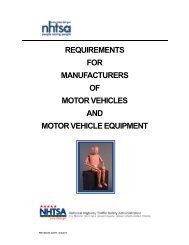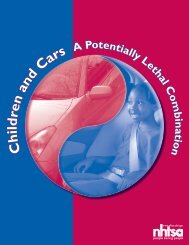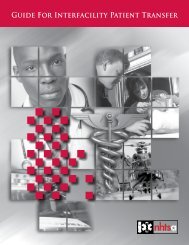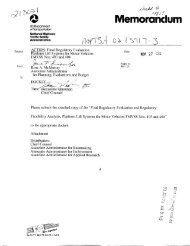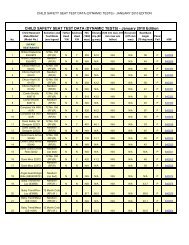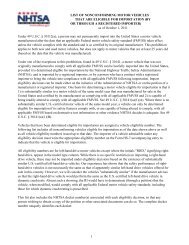The Criminal Justice System: A Guide for Law Enforcement ... - NHTSA
The Criminal Justice System: A Guide for Law Enforcement ... - NHTSA
The Criminal Justice System: A Guide for Law Enforcement ... - NHTSA
Create successful ePaper yourself
Turn your PDF publications into a flip-book with our unique Google optimized e-Paper software.
commonly used when the judge believes the defendant deserves punishment, but wants<br />
to allow the defendant to continue to work at his or her job.<br />
An “indeterminate sentence” is a State prison sentence with two numbers<br />
defining the term in years, a minimum and a maximum. <strong>The</strong> sentence is indeterminate in<br />
the sense that the parole board, not the judge, determines the defendant’s release date.<br />
Examples of indeterminate sentences are sentences of 1 to 3 years, or 2 to 4 years, or 15<br />
years to life.<br />
Finally, a “determinate sentence” or “fixed sentence” is a State prison<br />
sentence having a single number of years. Examples are: 1.5 years, 6 years, or 15<br />
years. <strong>The</strong> sentence is “determinate” in that no parole board is involved in making<br />
the release decision.<br />
<strong>The</strong> term imposed by the sentencing judge can be misleading because in many<br />
States, as an inducement to good behavior while incarcerated, defendants can earn the<br />
right to be released earlier than their stated terms. <strong>The</strong>se inducements include good time,<br />
merit time, conditional release, parole release, and other things.<br />
If there are multiple sentences of imprisonment imposed upon a defendant, the<br />
sentences will run either “concurrently” or “consecutively.” “Concurrently” means that<br />
all the sentences run at the same time and all are satisfied when the longest one is done.<br />
“Consecutively” means the sentences are served one at a time, so the sum of the terms is<br />
what governs. To make matters even more confusing, some of the sentences may be<br />
imposed to run concurrently to each other but consecutively to others. Depending on the<br />
circumstances, the choice of concurrent or consecutive may be dictated by statute, or<br />
may be left to the judge’s discretion.<br />
Stop Temporary detention of an individual <strong>for</strong> investigation. To be legal, a stop<br />
must be based on reasonable suspicion to believe the individual has committed, or is<br />
about to commit, some violation of the law. If the stop yields in<strong>for</strong>mation to confirm the<br />
suspicion, the stop may escalate into an arrest.<br />
For example, upon seeing a car weaving back and <strong>for</strong>th over the center line, an<br />
officer would have reasonable suspicion to believe the driver might be intoxicated. <strong>The</strong><br />
officer could then stop the car, talk to the driver, and administer field sobriety tests. If<br />
that investigation confirms that the driver is intoxicated, the officer would then have<br />
probable cause to believe the driver was intoxicated and could lawfully arrest the driver<br />
<strong>for</strong> the crime of Driving While Intoxicated.<br />
Suppression of Evidence A court ruling disallowing evidence due to<br />
unconstitutional conduct by law en<strong>for</strong>cement officers. Suppression of evidence means the<br />
court has invoked the exclusionary rule. Evidence may be reliable, yet still be suppressed<br />
because it was obtained in an illegal manner.<br />
<strong>The</strong> evidence sought to be suppressed is usually either (1) an incriminating<br />
statement made to a police officer, (2) physical items of evidence seized by the police,<br />
37


